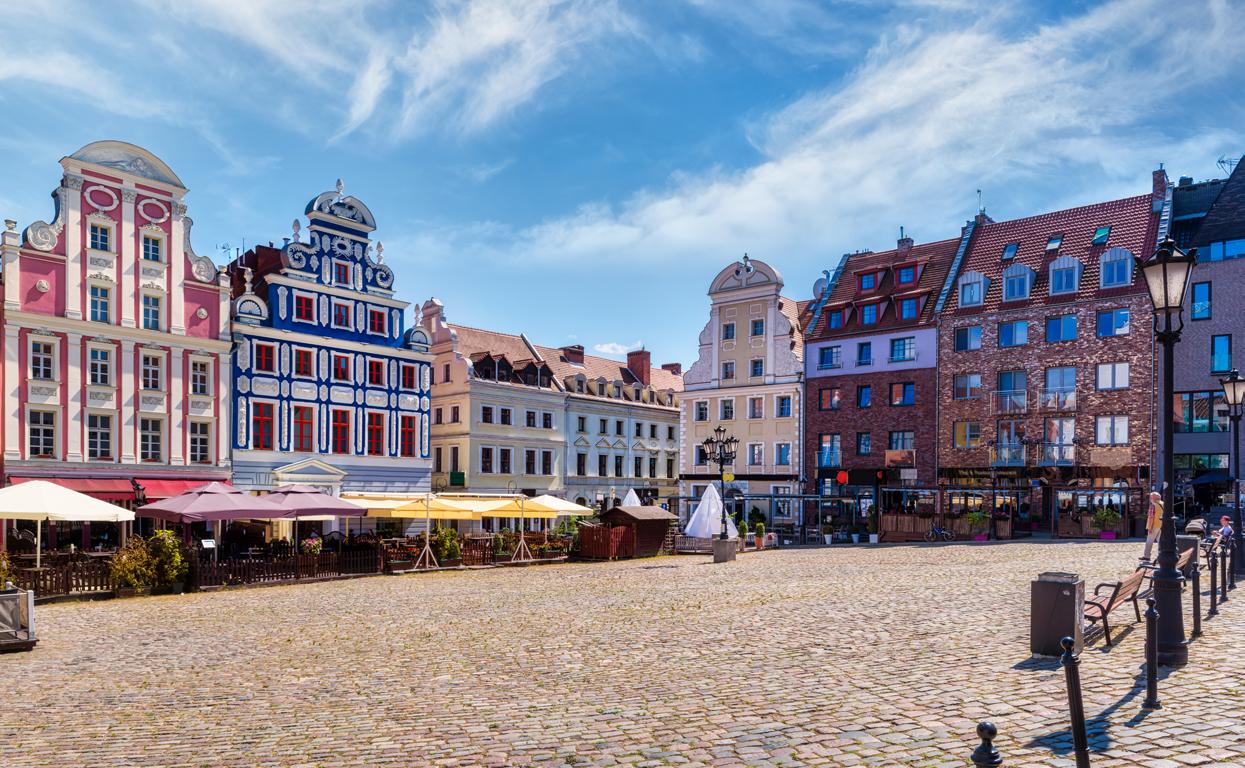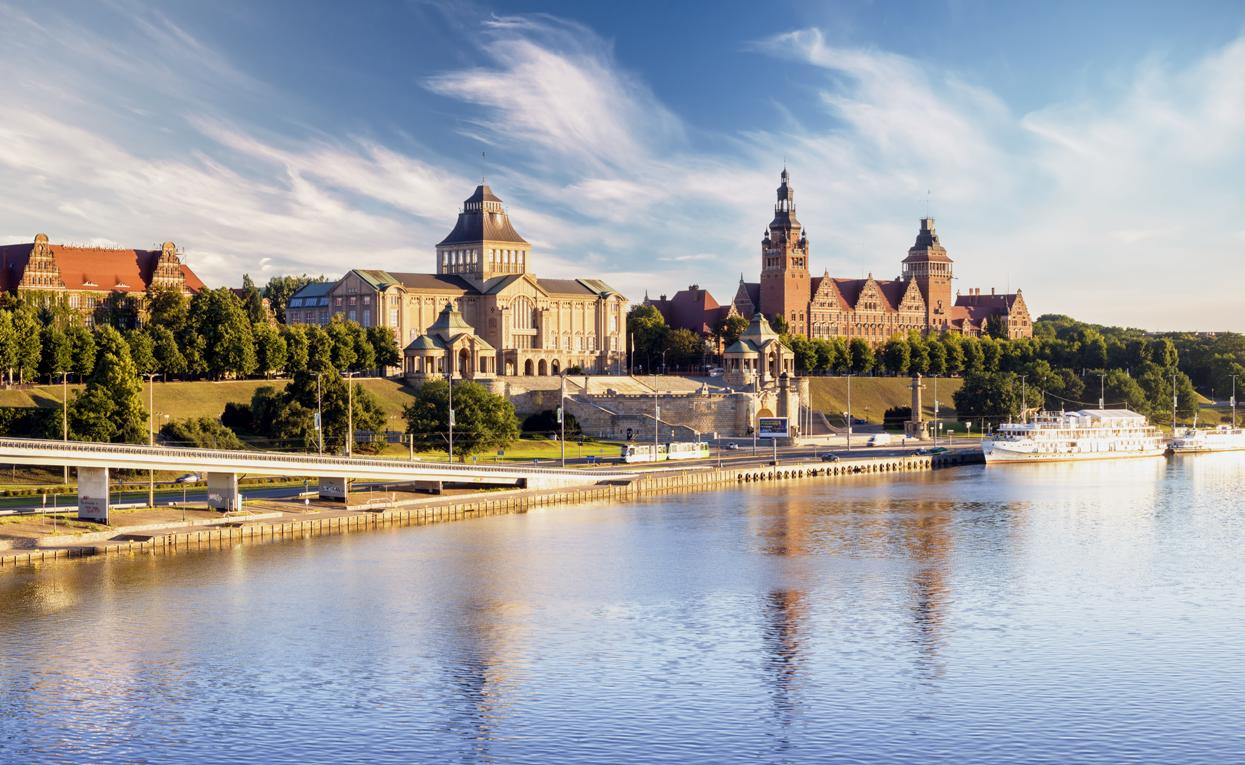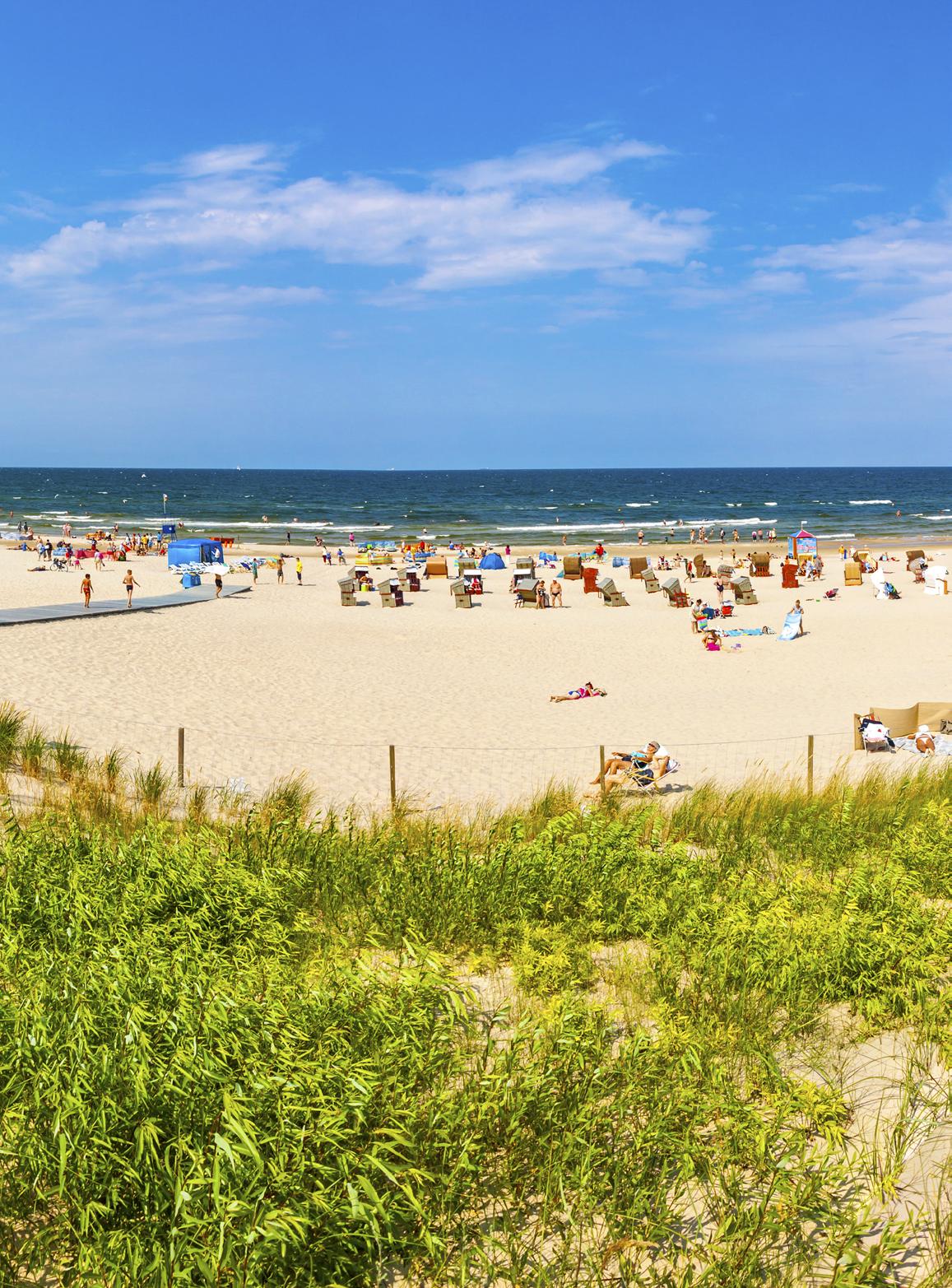
6 minute read
HARBOUR CITIES SEA OF ATTRACTIONS
from MAEM MAGAZINE 9
by MAEM
In the second article dedicated to the curiosities of the most beautiful harbour cities we still stay in Poland. This time we move from Tricity to the west coast, where there is a harbour complex - one of the biggest in the Baltic Sea region. The harbours in Szczecin and Swinoujscie are situated on the shortest route connecting Scandinavia with Central and Southern Europe, as well as on the shortest sea route connecting, through the Baltic Sea, Finland and Russia, Lithuania, Latvia and Estonia with Germany and Western Europe. Szczecin is the capital and largest city of the Zachodniopomorskie voivodeship, located on Szczecin's Embankment, on the Odra River and Dabie Lake. The history of the city dates back to the 9th century, when Slavic dukes built here a fortress surrounded by a moat, at the foot of which a trading and fishing settlement developed. Szczecin has a very rich history, which, like Swinoujscie, was influenced by the changing rulers over the centuries - Poland, Denmark, Sweden and Prussia. Since 1945 the city has belonged to Poland, as part of the so called Recovered Territories. Due to its border location and proximity to the Baltic Sea, accessible via the navigable Odra River and Szczecin Deluge, Szczecin has become the central economic hub of the region. The city has a seaport, repair, yacht and naval shipyards. The city is a tourist center with a large number of historic buildings. It is also an academic center with a number of renowned universities, and a cultural center with numerous theaters, museums and the famous Opera House The harbour in Swinoujscie is on the sea coast, while the one in Szczecin is 68 kilometers inland. The crossing of the waterway from the roadstead in Swinoujscie to Szczecin takes 4 hours.
The location of the ports in Szczecin and Swinoujscie in relation to each other makes them complementary. Thanks to its location by the sea, Swinoujscie can provide highly efficient ferry connections and offer access to larger vessels - up to 13.5 metres of draft. On the other hand, the harbour in Szczecin, far from the sea and accessible to smaller vessels - with a draught of up to 9.15 metres - gives the opportunity to reach the hinterland by the cheapest sea route, and therefore much closer to the recipients and senders of the cargo handled there.
The two harbour towns are very different from each other in size, character and status. Both are beautiful in their own way and equally worth a visit. Swinoujscie and Szczecin are well connected with each other. Using public transport, you can easily get from one
to the other in about two hours.
The new headquarters of the Philharmonic in Szczecin is one of the most modern buildings in Poland, which has already become a contemporary architectural icon. It stands out with its unusually original soaring mass, designed by Spanish architects from Barozzi Veiga studio from Barcelona. The building, which was erected on the site of the pre-war Concert House - Konzerthaus, combines history and modernity, taking inspiration from its former location and historical buildings. The Philharmonic follows the European tradition of concert halls and houses.
Podzamcze

There is a reason why Szczecin's Podzamcze is called ‘the new old town'. As a result of air raids by the Allies, most of the Lower Town was razed to the ground. Its present-day appearance is different from the original one, although it refers to it. Today the Sienny Square is a meeting place frequented by people from Szczecin and tourists.

Chrobry Embankments
One of the most beautiful observation terraces in Europe, from which you can watch the vast panorama of the Odra and the harbor. The embankment is 500 meters long and lies 19 meters above the level of the Odra river bank. The upper part of the embankment houses the Naval Academy and the building that houses the Contemporary Theatre and the National Museum. The West Pomeranian Provincial Office is also located there. Opposite the National Museum around 1914 a two-figure sculpture of Hercules fighting with Centaur was placed. At the foot of the Embankment there is a fountain with figures of Jan from Kolno and Wyszak, and two tall columns stylized as lighthouses.


Castle of the Pomeranian Dukes
The Renaissance Castle of the Pomeranian Dukes, located on a hill near the Odra River, is one of the most important monuments of Western Pomerania. In the past it was the residence of the House of Griffins - the dynasty ruling in the Pomeranian Dukedom from the XII century to 1637. Above the five-winged edifice with two courtyards - the Large and the Mint - dominate towers: the Bells, the Prison and the Clock. Inside the castle one can see, among others, the Witches' Cell with replicas of instruments of punishment and torture, dedicated to Sidonia von Borck, executed after being accused of witchcraft, as well as Lubinus' Cabinet, an outstanding cartographer from the XVII century, with a valuable copy of his Great Map of Pomeranian Duchy. A special place is the Crypt of the Griffins with the sarcophagi of the former rulers of the Duchy. On the roof of the North Wing there is a Princes' Terrace, from which, as well as from the Bell Tower - the highest vantage point of the castle - an impressive panorama can be admired.
The city lies on the Swina Strait, which in its northern part joins the Baltic Sea and in its southern part the Szczecin Deluge. It is spread over three inhabited islands: Uznam, Wolin and Karsibor as well as on 41 smaller uninhabited islands. The first human settlements in what is now Swinoujscie appeared as early as 5,000 years ago, as evidenced by archaeological findings, and the oldest records of the area date back to the 12th century. The history of Swinoujscie, as well as that of the entire region, has been marked by the intersection of Polish, Swedish, Danish and Prussian interests. Swinoujscie was granted town rights in 1765 and in 1747 a harbour was built there; it was destroyed during World War II. In 1824 the town became a resort, and in 1895, after the discovery of brine and peloid springs - a health resort. After World War II, under the Potsdam Agreement, Swinoujscie became the most westwards located Polish harbour, the reconstruction of which began in 1948. It was rebuilt in 1948 and changed from a war harbour to a commercial-fishing harbour.
Today, Swinoujscie combines the atmosphere of a holiday resort with a modern harbour center. There are plenty of beautiful sandy beaches bordered by forests, as well as port infrastructure, with the LNG terminal at the forefront. The rich history of Swinoujscie is also a treat for history enthusiasts - there are several interesting museums in the town, such as the Museum of Coastal Defense and Marine Fisheries. Lovers of active recreation will find kilometers of biking and hiking trails. The city also has a wide range of restaurants and cafes located along the promenade. An undoubted attraction is the possibility to cross the symbolic border crossing on foot and visit our western neighbors.

We hope that we will encourage you to spend some time getting to know two beautiful port cities of the Polish west coast. In the next edition of the journey through the port cities we will leave Poland, remaining on the Baltic Sea. See you there!









